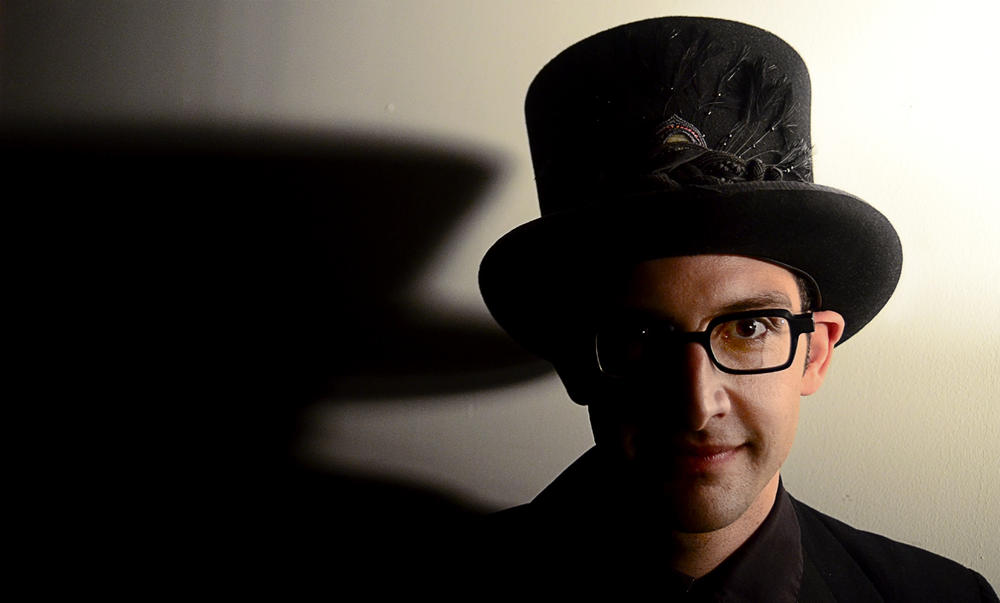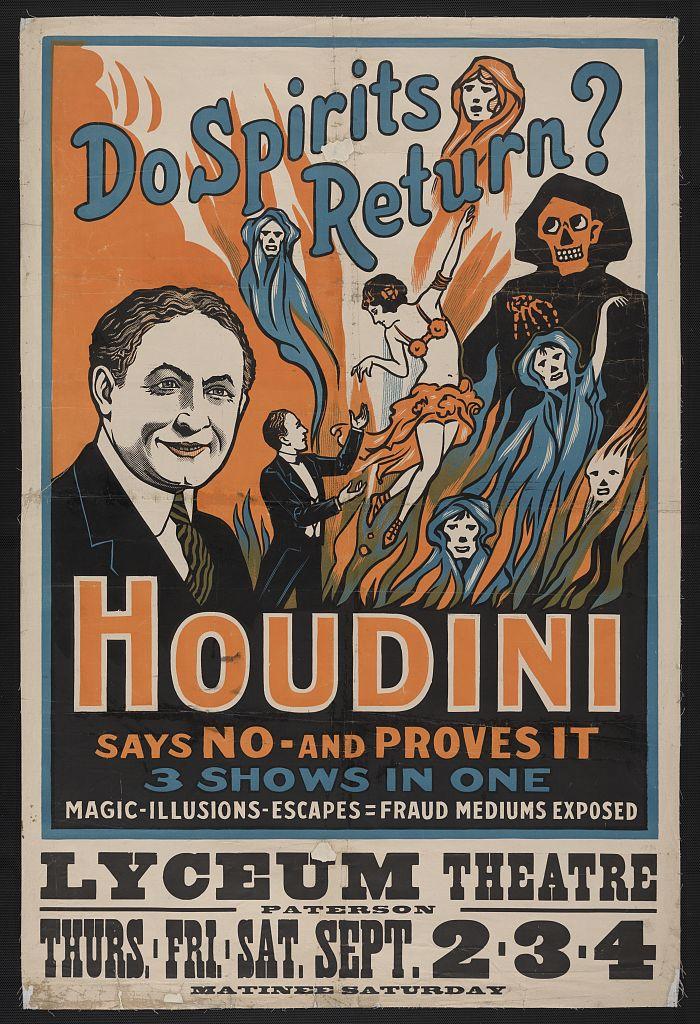Section Branding
Header Content
From A Dueling Rabbi To Séances, Atlanta’s Breman Museum Tells Houdini’s Real Story
Primary Content
By the time he was 11 years old, Ehrich Weiss was famous for unlocking the door of every store in his town over the course of one night. As a kid, a trip to the circus inspired him to perform a neighborhood show for which he called himself Erich, King of the Air. Then, as an adult, he transformed himself into arguably most famous magician in the world: Harry Houdini.
The stories of Houdini’s escapes from handcuffs and his Water Torture Cell have survived almost a century after his death. Other tales are lesser-known, like how the Weiss family is said to have fled Hungary after Houdini’s father, a rabbi, reportedly killed a nobleman in a duel.
The Breman Museum in Atlanta is featuring artifacts from such stories in a new exhibit called Inescapable: The Life and Legacy of Harry Houdini. Its curator, magician David London, stopped by On Second Thought to unravel the tales.
Interview Highlights
Dueling Rabbi
Ehrich Weiss was born in Hungary in 1974. London says dueling was common at the time, and historians believe Houdini’s father, Rabbi Mayer Samuel Weisz, got into such a battle with a man who turned out to be a nobleman. The rabbi is believed to have fled Hungary and the fight, and his family soon followed him to Appleton, Wisconsin.
Bloodless Vivisection
Houdini credits a magician named Dr. Lynn with helping to inspire him to become a magician. Lynn was known for his trick called the Bloodless Vivisection, which could be considered a historical variant of sawing a woman in half. As a child, Houdini saw a Bloodless Vivisection performance in Milwaukee, but historians believe he actually saw a Lynn impersonator.
Cyclorama
As a child, it's likely Houdini saw Atlanta’s Cyclorama Civil War painting when it was on display in Wisconsin. The Cylorama might have inspired Houdini to work with illusions since the exhibit seems to put visitors inside a battle scene.
Prince of the Air
Houdini’s first performance was for the folks in his neighborhood. He had seen a circus in town, and the acrobats inspired him to call himself the Prince of the Air.
The Little Messenger
One of Houdini’s first magic tricks was called The Little Messenger. London says Houdini would make a small doll disappear and then reappear "at an impossible location, usually a spectator’s pocket.”
Running Away
When Houdini was 12 years old, he ran away from home for about a year. London says doing so wasn’t as shocking back then. The letter he left for his mother is on display at The Breman Museum as part of the exhibit.
Houdini, King of Cards
Houdini was working at a necktie factory in New York when a colleague introduced him to French magician Robert Houdin, who became the inspiration for Houdini’s stage name. For a while, Houdini started performing as the King of Cards since such tricks were popular at the time.
Escape to Vaudeville
Martin Beck, a vaudeville theater owner, saw Houdini perform his card tricks. Houdini was starting to experiment with handcuff escapes in his act, and that’s what Beck knew would make him a star. Beck started booking Houdini at his theaters, and Houdini became the King of Handcuffs. Then, he started getting into other escape tricks and vanishing acts also.
Shaming Impersonators
London says, when impersonators began popping up, Houdini would disguise himself, sneak into their acts and challenge them to get out of handcuffs Houdini knew were inescapable. After they failed to get out of them, London says Houdini would reveal himself and shout, “I am Houdini, the only real King of Handcuffs!” London says Houdini later took handcuffs out of his act and published a book about his methods in order to silence impersonators.
Water Torture Cell
The only known recording of Houdini’s voice is from an 1914 Edison wax cylinder. On it, Houdini says: “Ladies and gentleman, I take great pleasure in introducing my latest invention, the Water Torture Cell …” For the trick, Houdini had police manacle his hands and feet. He’d tell audience members to hold their breath, and then someone would lower him headfirst into a locked cell full of water. Assistants would then cover it with a curtain. London says Houdini probably escaped immediately, but he’d often not come out from behind the curtain for several minutes in order to build suspense.
Almost Dying
Houdini was once sewn into the belly of a “sea monster,” that London says was most likely a whale. The famous magician had no trouble escaping, but the fumes of the rotting carcass almost killed him.
Straight to the Front Page
Houdini would publicize his show with by drawing tens of thousands of viewers to a public straitjacket escape. He’d be wrapped up in a straitjacket and suspended head-down above the crowd. His escape from the quandary often landed him on the front page, especially since he frequently performed the trick right in front of the local newspaper building.
Debunking Con Artists
Houdini was a master of deception, but he didn’t like con artists. He was skeptical of the spiritualists and mediums who proliferated after the Great War, swindling grieving loved ones out of their money. Houdini published books explaining how they worked their deceptions and even worked debunking them into his own act.
Houdini’s Death
A 1953 film called Houdini inaccurately portrayed the escape artist dying in his Water Torture cell, and people began to believe in that inaccurate account of Houdini’s demise. London says Houdini was actually trying to train his body to take strong blows, and a student who learned this caught him unaware with punches while he was backstage. Houdini later collapsed in Detroit. London says the violence caused it appendix to burst, and septic poisoning killed him on Halloween day of 1926.
Trying to Escape the Grave
Despite his work to debunk mediums, Houdini believed communing with the dead was possible. Londons says, “Houdini believed that, if anyone could escape death, it would be Houdini.” He set up a secret code with his wife and had her hold a séance for him each year on the anniversary of his death. The tradition continues today – with no luck yet.
The Legacy Survives
London says Houdini’s legacy survives, in part, because turn-of-the-century film and other technology enabled him to become one of the first international superstars. “I think his true power is in what he represented,” London says. “He still serves as sort of a beacon of hope that you can get out of … anything.”





